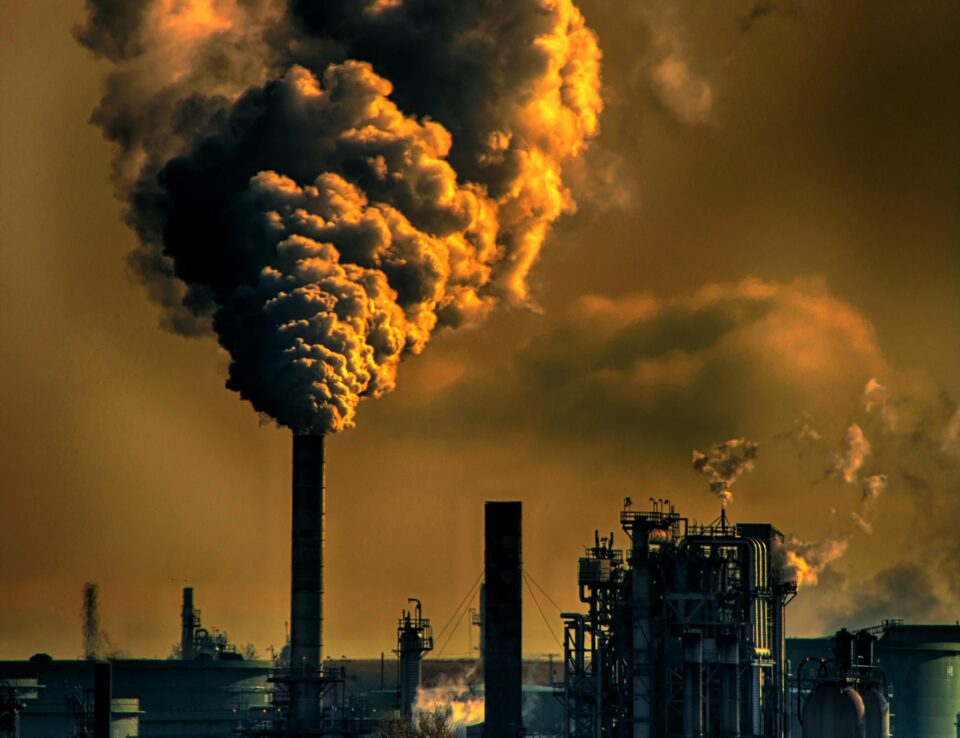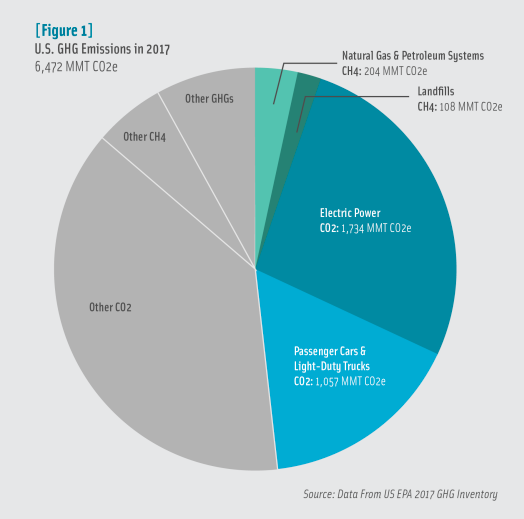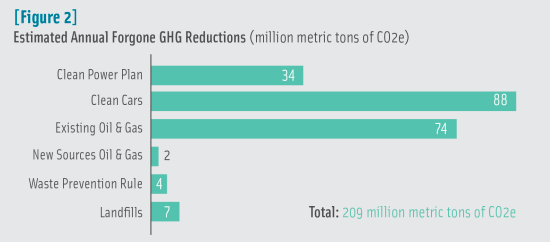Climate & Health Showdown in the Courts
State Impact Center / March 1, 2019

Executive Summary
This year, the Trump administration has set its sights on watering down or outright repealing a half-dozen health and environmental rules critical to the health and welfare of all Americans as well as the planet. The scope of the administration’s effort to tear down these vital, core protections that cut across the most significant sources of pollution in our nation is breathtaking. To date, state attorneys general have been remarkably successful in fighting many of the Trump administration’s efforts to roll back important clean energy, climate change and environmental protections.
State attorneys general are now preparing, however, for another, even more critical battle with the administration over climate and health risks from several of the nation’s largest emitting sectors: coal, cars, oil and gas, and landfills. While the Trump administration had consistently attacked environmental and clean energy initiatives, these specific actions bring the sweeping scope of its efforts into perspective. This report focuses on the following key areas:
- Coal Industry: Clean Power Plan (CO2)
- Automotive Industry: Clean Car Standards (CO2)
- Automotive Industry: Glider Truck Pollution (CO2)
- Oil & Gas Industry: Methane emissions (new and existing sources)
- Oil & Gas Industry: Methane emissions (public lands)
- Landfills: Methane emissions
These six rules provide the largest and best near-term opportunities to reduce climate pollution from the highest contributors to greenhouse gas emissions: the power sector (coal-fired electric generation); the transportation sector (cars and light trucks); the oil and gas sector; and the waste sector (landfills). Together, these four sectors account for over 3,000 million metric tons (MMT) of carbon dioxide equivalent (CO2e) emissions in the United States each year -- nearly half of greenhouse gas emissions from all U.S. activities. The chart below shows the percentage of total U.S. greenhouse gas emissions attributable to carbon dioxide (CO2), methane (CH4), and other greenhouse gases (GHGs). It also illustrates (in the dark shading, on the right side of the pie chart) the large proportion of those total greenhouse gases that are tied to the sources and sectors highlighted in this report -- and targeted for rollback by the Trump administration.

Combined, these sources and sectors are core drivers of U.S. contributions to global climate change and, because of the legal obligation to reduce their emissions, they provide the most important near-term opportunity to reduce greenhouse gas emissions and fight against climate change. And yet the administration is doing the opposite, causing great harm to public health and the environment, as recently laid out in the Fourth National Climate Assessment and highlighted throughout this report. In short, the Trump administration is preparing to take us over the climate cliff.

The Trump administration’s actions amount to a virtual surrender to climate change, allowing more than 200 MMT of CO2 Eq. to be emitted annually by 2025, as illustrated in Figure 2. At the same time, these actions bring with them increased levels of conventional pollutants. The report lays out below, on a rule-by-rule basis, the serious health harms associated with the rules’ increased levels of such pollutants in these four major industrial sectors, including thousands more premature deaths, hundreds of thousands more asthma attacks, and countless additional missed school and work days. The report uses, in part, analysis completed by the prior administration to provide a sense of the magnitude of the associated economic and health-related costs. For example:
- Replacing the Obama-era Clean Power Plan with Trump’s misnamed Affordable Clean Energy plan would generate an increase in particulate matter (PM), sulfur dioxide (SO2) and nitrogen oxides (NOx) that, by 2030, could annually cause severe health effects on major portions of the population (particularly children, the elderly and other vulnerable populations), including 1,630 more incidences of premature deaths, 120,000 additional asthma attacks, and 140,000 missed school days and 48,000 lost
work days. - By not addressing methane leakage from both new and existing oil and gas operations, the toxic soup released during oil and gas operations -- including methane, volatile organic compounds (VOCs) and hazardous pollutants such as benzene -- will generate dangerous, localized pollution that will annually cause 1,900 premature deaths, 1.1 million asthma attacks, and 3,600 emergency room visits by 2030.8
- Reinstating a loophole to allow the sale of so-called “glider trucks” with non-compliant, older, refurbished engines would, by itself, put an estimated 120,000 non-compliant medium and heavy-duty trucks on the road by 2025, emitting nearly 300,000 tons of NOx and nearly 8,000 tons of PM annually, causing 9,000 to 21,000 premature deaths and untold numbers of asthma attacks, emergency visits and lost work days every year.
Monetization of the substantial forgone benefits associated with reducing greenhouse gas emissions further illustrates the severe harm that will result from the Trump administration’s attempt to walk away from its legal and moral obligations to reduce greenhouse gas emissions.
The adverse impacts associated with the Trump administration’s all-out assault on greenhouse gas emissions reductions also undercut steps that many jurisdictions have taken to mitigate the impacts of climate change by, for example, changing their energy mix to favor increased use of clean, renewable energy. These policies have succeeded in helping a large number of states lower emissions from the very industrial sectors that the Trump administration now wants to let off the hook. State and local initiatives have proven that emissions reductions can move forward in tandem with continued strong economic growth, while providing increased protection for vulnerable low-income and minority communities from unhealthy pollution.
State attorneys general will continue to fight vigorously against the Trump administration’s attempts to replace existing rules that require greenhouse gas emissions reductions with new rules that unlawfully and harmfully negate those reductions. As laid out in this report, attorneys general have been actively engaged in the six rulemakings and the four key sectors highlighted in this report. With the full scope of the assault on greenhouse gas emissions now coming into clear view, state attorneys general will be fighting even harder to protect their states’ and constituents’ interests in reducing harmful pollution and fighting climate change. The cooperative federalism model that serves as the basis of environmental law and regulation in the United States, however, means that the states should not have to take on this task alone, nor should they be hindered by a federal government unwilling to confront the reality of climate change.
